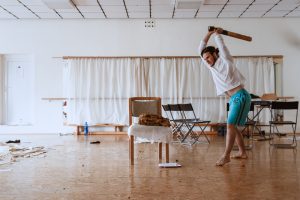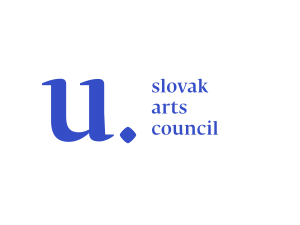 Workshop is for experienced actors, dancers and performers or for students of art schools
Workshop is for experienced actors, dancers and performers or for students of art schools
We will focus on the potential of the creative sources of performer in the process of creation. One of the tasks of the workshop will be to find sources for the creative process that allow performers to open paths to different approaches and unexplored connections of artistic material. Initial impulses will be coming from anatomy of the movement and the body, from playing musical instruments, from work with text as well from object and materials. While working with each of these components, the rhythm plays an irreplaceable role, so we will develop this aspect during the various phases of the workshop.
We will look for ways to free ourselves from established assumptions and assumed own limits. What role does the technique (acting, movement, voice, etc.) play in this process and how to work with different techniques so that they are not a constraint for the creative process, but help and support to discover new possibilities and approaches.
Themes of complementary art (relationships, definitions, functions)
Object – sculpture, object, props
Sound – picture of the sound, sound of the image, live sound versus recorded sound
Bearer – interpreter, performer, actor, dancer, musician
Anatomy – what we are coming from
Rhythm – in image, movement and sound, text, in the tectonics of the work
Information and symbol – differentiation, use
Daily program of the workshop
The workshop will be divided into two phases.
In the first one we will focus on practical exercises, developing the physical techniques, basics of music, ideological and theoretical aspects of complementary art. We will work with the rhythm in its various meanings /musical, tectonic/ and we will learn about basic differences and functions of objects (sculpture, matter, props) and make familiar with each components.
In the second phase we will focus on creative process and research. We will be looking for connecting musical, visual, verbal and movement expressions into organic language and as well working with complementarity of the individual and ensemble. The basis for this phase will be to use the experiences of each components that we will gradually get into dialogue and learn to perceive their connections, interplay and mutual interaction.
Supported using public funding
